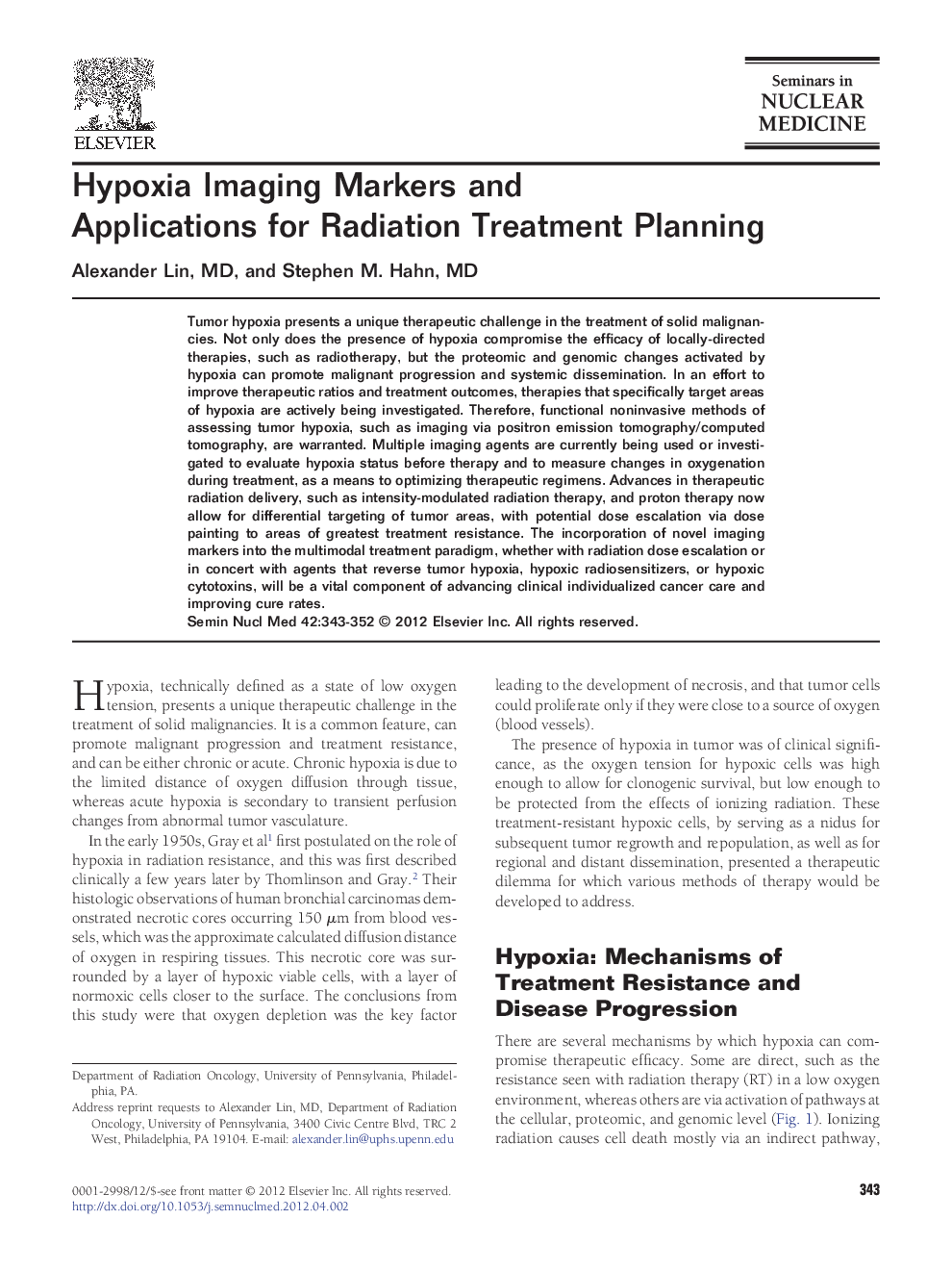| Article ID | Journal | Published Year | Pages | File Type |
|---|---|---|---|---|
| 4251070 | Seminars in Nuclear Medicine | 2012 | 10 Pages |
Abstract
Tumor hypoxia presents a unique therapeutic challenge in the treatment of solid malignancies. Not only does the presence of hypoxia compromise the efficacy of locally-directed therapies, such as radiotherapy, but the proteomic and genomic changes activated by hypoxia can promote malignant progression and systemic dissemination. In an effort to improve therapeutic ratios and treatment outcomes, therapies that specifically target areas of hypoxia are actively being investigated. Therefore, functional noninvasive methods of assessing tumor hypoxia, such as imaging via positron emission tomography/computed tomography, are warranted. Multiple imaging agents are currently being used or investigated to evaluate hypoxia status before therapy and to measure changes in oxygenation during treatment, as a means to optimizing therapeutic regimens. Advances in therapeutic radiation delivery, such as intensity-modulated radiation therapy, and proton therapy now allow for differential targeting of tumor areas, with potential dose escalation via dose painting to areas of greatest treatment resistance. The incorporation of novel imaging markers into the multimodal treatment paradigm, whether with radiation dose escalation or in concert with agents that reverse tumor hypoxia, hypoxic radiosensitizers, or hypoxic cytotoxins, will be a vital component of advancing clinical individualized cancer care and improving cure rates.
Related Topics
Health Sciences
Medicine and Dentistry
Radiology and Imaging
Authors
Alexander MD, Stephen M. MD,
